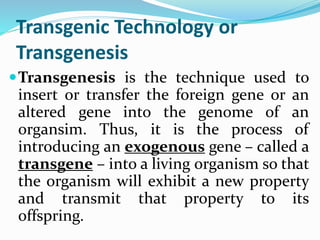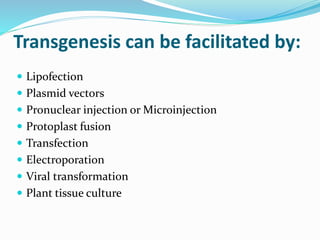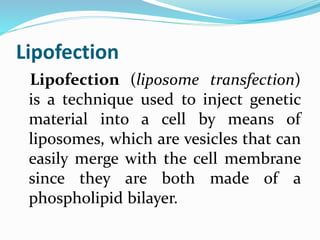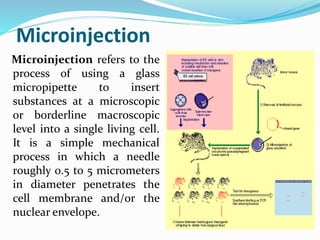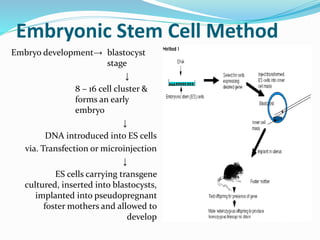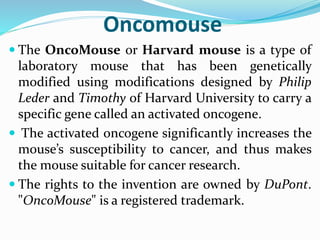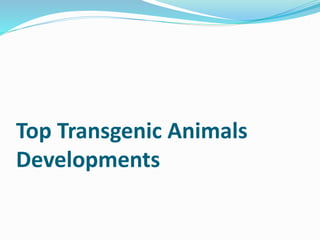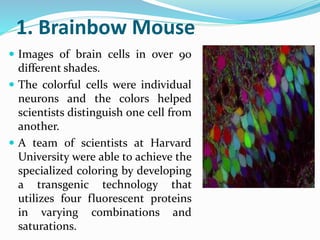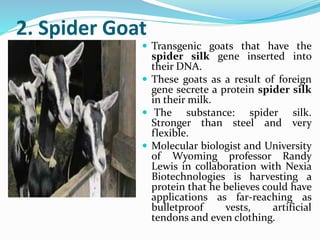This document discusses transgenic technology and various transgenic organisms that have been developed. It begins by defining transgenesis as the process of introducing an exogenous or altered gene into an organism so that it exhibits a new property. Various methods for creating transgenic organisms are described, including microinjection, lipofection, and viral transformation. Examples of transgenic applications in medicine, research, industry, and agriculture are provided. Key transgenic animals that have been developed including brainbow mice, spider goats, cancer-resistant mice, and glofish are summarized.

